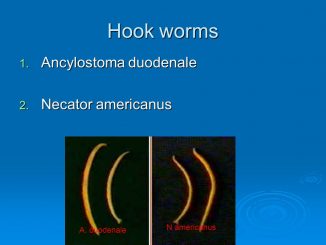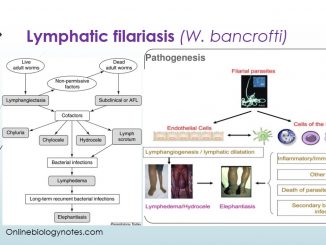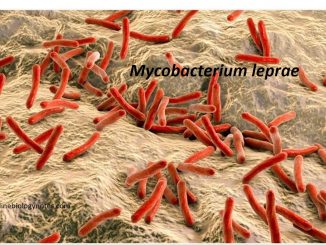
Leishmaniasis: Visceral (kala-azar), Cutaneous, Lupoid and Mucocutaneous
Visceral leishmaniasis (VL) or Kala-azar: Visceral Leishmaniasis (VL) also known as kala-azar or black fever or dum-dum fever, is the most severe form of leishmaniasis. […]

Visceral leishmaniasis (VL) or Kala-azar: Visceral Leishmaniasis (VL) also known as kala-azar or black fever or dum-dum fever, is the most severe form of leishmaniasis. […]

Precipitation ring test Principle: The ring or interfacial test is a simple serological method that exemplifies the precipitin reaction in solution. This antigen-antibody reaction can […]

Ancyclostoma duodenale VS Necator americanus S.N Characteristics of adult worm Ancylostoma Duodenales Necator americanus 1 Pathogenicity More pathogenic Less pathogenic 2 size Larger and thick […]

Hookworms: Hookworms are parasitic nematode that lives in the small intestine of mammalian host such as dog, cat or humans. They are characterized by their […]

Dracunculus medinensis Dracunuculus medinensis is among the longest nematodes affecting humans. It is also known as Guinea worm, Medina worm, serpent worm or dragon worm. […]

Mode of transmission: Infected person with circulating microfilariae is the chief source and reservoirs of infection. Person to Person transmission occurs by the bite of […]

Wuchereria bancrofti or Bancroft filarial worm is a parasitic filarial nematode spread by a mosquito vector. It is one of the three parasites that causes […]

Specimens: It includes nasal mucosa, skin lesions, ear lobules. Occasionally, lymph nodes and affected nerves. Method of collecting of skin smears: Slit and scrap method: […]

Leprosy: Hansen’s disease (leprosy) is a chronic granulomatous disease of humans primarily involving the skin, peripheral nerves and nasal mucosa but capable of affecting any […]

Mycobacterium leprae Mycobacterium leprae is the only pathogenic bacteria of man that has not yet been cultivated in vitro and thus fails to fulfill the […]
Copyright © 2024 | WordPress Theme by MH Themes